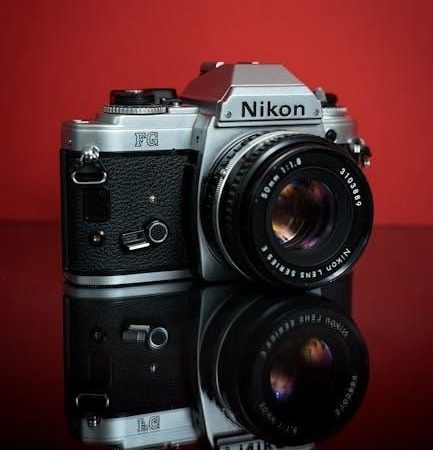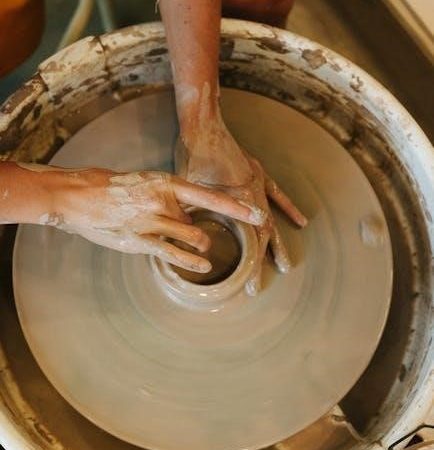Best Manual Settings for Outdoor Photography⁚ A Comprehensive Guide
Mastering outdoor photography involves understanding the exposure triangle⁚ ISO, aperture, and shutter speed. Optimal settings depend on lighting conditions. Prioritize a fast shutter speed (1/250s or faster) to freeze motion, and adjust ISO and aperture accordingly for desired depth of field and exposure. Shoot in RAW for maximum post-processing flexibility.
Choosing the Right Shooting Mode
For optimal control over your outdoor photographs, selecting the Manual (M) shooting mode is crucial. Unlike automatic modes that make decisions for you, Manual mode empowers you to fine-tune each aspect of the exposure triangle⁚ ISO, aperture, and shutter speed. This hands-on approach is particularly beneficial in diverse outdoor lighting conditions, allowing you to adapt your settings for bright sunlight, soft shadows, or the dynamic range of a sunset. While other modes like Aperture Priority (A) or Shutter Priority (S) offer some control, Manual mode provides the greatest precision and allows you to fully express your creative vision. Mastering Manual mode might seem daunting initially, but with practice, it becomes intuitive and yields consistently superior results. You’ll learn to anticipate light changes and adjust accordingly, resulting in images that perfectly capture your artistic intent. The investment in learning this mode pays off significantly in the quality and consistency of your outdoor photography.
Understanding the Exposure Triangle⁚ ISO, Aperture, and Shutter Speed
The exposure triangle—ISO, aperture, and shutter speed—forms the foundation of photographic exposure. Understanding their interplay is vital for achieving well-exposed outdoor images. ISO measures the camera sensor’s sensitivity to light; lower ISO values (like 100 or 200) are ideal in bright conditions, minimizing noise (grain), while higher ISO values are necessary in low light, but introduce more noise. Aperture, measured in f-stops (e.g., f/2.8, f/8), controls the lens opening, affecting depth of field—a wider aperture (smaller f-number) creates a shallow depth of field, blurring the background, while a narrower aperture (larger f-number) increases depth of field, keeping both foreground and background sharp. Shutter speed, measured in seconds or fractions thereof (e.g., 1/200s, 1/60s), determines how long the sensor is exposed to light. Faster shutter speeds freeze motion, while slower speeds can create motion blur; The balance between these three elements dictates the final exposure, brightness, and overall image quality. Experimentation and practice are key to mastering their interaction and achieving the desired photographic effect.
Optimizing ISO for Outdoor Light Conditions
Optimizing ISO is crucial for outdoor photography, directly impacting image quality. In bright sunlight, the lowest native ISO setting (usually 100 or 200) is recommended. This minimizes noise or grain, resulting in cleaner, sharper images. However, as light levels decrease—during sunrise, sunset, or on overcast days—a higher ISO might be necessary to achieve a proper exposure. Increasing the ISO increases the sensor’s sensitivity to light, allowing for faster shutter speeds or narrower apertures. But, be mindful that higher ISO settings generally introduce more image noise. The ideal ISO setting depends on the specific lighting conditions and the capabilities of your camera. Modern cameras often handle higher ISO values well, but excessive noise reduction in post-processing can soften details. Experimentation and careful observation of your images will help determine the optimal balance between image brightness and noise levels in various outdoor lighting scenarios. Consider shooting in RAW format to preserve image data and have more flexibility for noise reduction in post-processing.
Mastering Aperture for Depth of Field Control
Aperture, measured in f-stops (e.g., f/2.8, f/8, f/16), significantly impacts depth of field—the area of your image that appears sharp. A wide aperture (low f-number like f/2.8) creates a shallow depth of field, ideal for isolating subjects against a blurred background, a technique often used in portrait photography to draw attention to the subject. Conversely, a narrow aperture (high f-number like f/16) yields a large depth of field, ensuring that both foreground and background elements are in sharp focus. This is particularly beneficial for landscape photography, where you want maximum sharpness from the nearest flowers to the distant mountains. The optimal aperture choice depends on your creative vision. In outdoor photography, you might use a narrow aperture to capture landscapes with everything in focus, while a wider aperture could be used to isolate a flower or a person against a pleasing bokeh effect. Remember that diffraction can affect image sharpness at very narrow apertures, so finding the right balance is key. Experiment with different apertures to understand how they influence the look and feel of your outdoor photographs.
Shutter Speed Selection for Sharpness and Motion Blur
Shutter speed, measured in seconds or fractions thereof (e.g., 1/200s, 1/60s, 1s), controls how long your camera’s sensor is exposed to light. Faster shutter speeds (e.g., 1/500s or faster) freeze motion, preventing blur in moving subjects like birds or flowing water. This is crucial for sharp images of dynamic scenes. Slower shutter speeds (e.g., 1/30s or slower) can intentionally blur motion, creating a sense of movement or a dreamy effect, often used to depict flowing water, light trails, or to convey a feeling of tranquility. The choice between a fast or slow shutter speed depends on your creative goals. For crisp, sharp images of stationary subjects in bright sunlight, a fast shutter speed is preferred. However, when aiming for a specific artistic effect, such as motion blur in a waterfall image, a slower shutter speed, possibly combined with a tripod for stability, becomes necessary. Consider the subject matter and the desired aesthetic when selecting your shutter speed. Experimentation is essential in mastering this aspect of outdoor photography to create the exact effect you are striving for. Remember that extremely slow shutter speeds may require a tripod to prevent camera shake.
White Balance Settings for Accurate Color Reproduction
White balance is a crucial setting that affects the color temperature of your images, ensuring accurate color reproduction. Different light sources—sunlight, shade, cloudy skies, tungsten—emit light with varying color temperatures. Incorrect white balance can result in images that appear too warm (orange or yellow tint) or too cool (blue tint). Most cameras offer preset white balance options like Daylight, Shade, Cloudy, and Tungsten. Selecting the appropriate preset for the prevailing lighting conditions is essential for achieving true-to-life colors. However, for more precise control, consider using the custom white balance feature. This allows you to take a sample of a neutral-colored object (like a white piece of paper) under the existing lighting conditions, instructing the camera to use that sample for accurate color calibration across the entire image. Experimenting with different white balance settings can also be a creative tool, introducing stylistic color shifts to your images, especially if you are aiming for a certain mood or artistic effect. Remember, accurate white balance is crucial for realistic outdoor photography, but artistic deviations can enhance the overall aesthetic appeal.
File Format⁚ RAW vs. JPEG
The choice between RAW and JPEG file formats significantly impacts the quality and flexibility of your outdoor photographs. JPEGs are compressed files, resulting in smaller file sizes and immediate viewability. However, this compression discards image data, limiting your ability to adjust exposure, white balance, and other settings during post-processing. RAW files, on the other hand, are uncompressed and retain all the image data captured by your camera’s sensor. This provides significantly more flexibility for adjustments in post-processing software like Adobe Lightroom or Capture One. You can recover details in shadows and highlights, correct white balance more accurately, and fine-tune colors with greater precision. While RAW files require more storage space and processing time, the superior image quality and editing control make them the preferred choice for serious photographers, especially in challenging outdoor lighting conditions where exposure and white balance might be difficult to get perfectly right in-camera. For maximum image quality and creative control in post-processing, RAW is highly recommended for outdoor photography.
Focusing Techniques for Outdoor Subjects
Achieving sharp focus in outdoor photography requires understanding various focusing techniques. For stationary subjects like landscapes, using a tripod and single-point autofocus is ideal. Carefully select the focus point on your camera, ensuring it’s precisely placed on the area of your subject you want to be the sharpest. With moving subjects, such as wildlife or people, continuous autofocus (AI Servo or similar modes) is crucial. This mode continuously tracks your subject, adjusting focus as it moves. Consider using back-button focus to separate autofocus from the shutter release, providing greater control. In low-light conditions, utilize a wider aperture (lower f-number) to let in more light, improving autofocus accuracy. If your subject is at a significant distance, use a telephoto lens and ensure sufficient light reaches the sensor. Experiment with different focusing modes and techniques to determine which approach yields the best results for your specific scenarios and subject matter. Remember, mastering focus is a key element in creating sharp, captivating outdoor images.
Essential Accessories for Enhanced Outdoor Photography
Elevating your outdoor photography often involves utilizing key accessories that significantly improve image quality and workflow. A sturdy tripod is essential for sharp images, especially in low light or when using slower shutter speeds. It provides stability, minimizing camera shake and ensuring crisp details. Consider a remote shutter release to avoid camera shake caused by manually pressing the shutter button. This is particularly useful for long exposures or in situations where even slight movement can impact image sharpness. A circular polarizing filter helps reduce glare and reflections from non-metallic surfaces, enhancing color saturation and contrast in your outdoor shots. A lens hood blocks unwanted light from entering the lens, reducing lens flare and improving image clarity. For carrying your gear safely and efficiently, a quality camera bag is vital. Select a bag tailored to your equipment size and the conditions you’ll be shooting in. Finally, consider a cleaning kit to maintain your lenses and sensor, ensuring optimal image quality. These accessories, while not directly impacting camera settings, are instrumental in producing professional-looking photographs.
Post-Processing Workflow for Outdoor Images
Post-processing is crucial for enhancing outdoor photographs and achieving the desired aesthetic. Begin by importing your RAW files into editing software like Adobe Lightroom or Capture One. These programs offer superior control over image adjustments compared to JPEG editing. First, adjust the white balance to ensure accurate color representation, correcting any color casts caused by varying lighting conditions. Next, fine-tune exposure, contrast, highlights, and shadows to optimize the overall dynamic range and detail in your images. Address any distracting elements or blemishes using the cloning or healing tools. For landscapes, consider subtle adjustments to vibrance and saturation to enhance the natural colors without making them appear artificial. If necessary, carefully employ sharpening techniques to enhance detail without introducing unwanted noise or artifacts. Finally, export your images in a high-resolution format suitable for printing or online sharing. Remember that subtle adjustments often yield the most natural and pleasing results. Experimentation and practice will refine your post-processing skills, allowing you to consistently achieve stunning results with your outdoor photographs.


